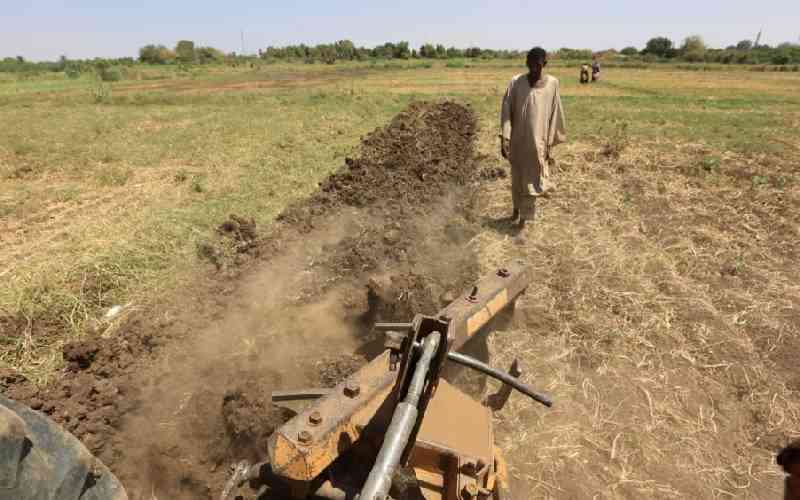Thousands of residents in parts of the Rift Valley, which is also home to Kenya’s bread basket, are facing starvation following a dry spell.
The famine in Baringo, Samburu, Laikipia and Nakuru counties is worsening as days go by. Residents of the arid and semi-arid lands are in danger of imminent starvation as rivers, pastures and farms dry up.
In the semi-arid parts of Baringo County, 329,782 residents are in dire need of emergency relief food following a four-month delay of rainfall, according to a recent report by the relief food task force, which is on a fact-finding mission.
Area County Commissioner Peter Okwanyo said the task force had revealed that the worst hit were three sub-counties where more than half of the population is affected.
In East Pokot Sub-county, 80 per cent of residents need relief food. In Marigat and Baringo North, at least 50 per cent of the population has a food deficit, and the same holds for a third of the people living in Mogotio and Baringo Central.
The least affected sub-county in Baringo is Eldama Ravine, which is located in the highlands, where only 20 per cent of residents are suffering from the effects of the drought.
Okwanyo said that based on the findings, the National Disaster Coordination Committee under the Ministry of Devolution, would determine the quantity of relief food to be distributed to the hungry residents.
“The national government is working with the county government, donors and non-governmental organisations in feeding the affected locals before the onset of the expected long rains,” said Okwanyo.
Political leaders from the arid and semi-arid areas have raised the alarm over looming hunger and starvation after a three-month delay of rains. Baringo Women’s Representative Grace Kiptui said humanitarian aid was urgently needed to avert a crisis among the pastoral communities.
The drought has caused conflicts over water and grazing points as the pastoralists migrate. Schools have not been spared. Naudo, Nakoko, Riong’o and Chesirimion primary schools in East Pokot, as well as Arabal, Kapindasum and Kasiela in Marigat, and Kamar Primary School in Mogotio are all facing a water crisis.
In Samburu County, no crops have been harvested since December 2013 as a result of failed rains. Pasture is greatly diminished and livestock are also facing starvation.
Some 60 per cent of the population, about 140,000 people, are facing starvation. About 33 per cent of the population is entirely dependent on relief food from the World Food Program (WFP).
Samburu Governor Moses Lenolkulal says the figures could increase. “The Government should move in fast and address before people start dying.”
Late last year, herders from Baragoi in Samburu North, which borders Turkana County, moved to Kom in Isiolo County, more than 400 kilometres away. Others moved towards Merti in Marsabit County.
William Lekopien, a prominent farmer, said the dry spell that began early last year was among the worst drought he had witnessed.
Stay informed. Subscribe to our newsletter
“Everyone is worried. There is nothing in our stores, and the livestock are becoming unproductive and growing thinner each day,” he said.
In Laikipia North, it estimated that at least 75,000 people are facing starvation while in Laikipia West, there are more than 80,000 people facing hunger. Most of the dams and rivers that residents depended on for water have dried up, and pastoralists have had to move to other areas.
Laikipia North MP Mathew Lempurker said the drought had persisted for four months in his area.
“We have not received any rain for the last few months and now the residents are facing starvation. The animals have started dying because there is not enough pasture and water,” he said.
Lempurker regretted that the Government had failed to provide a permanent solution to the drought in the region, 50 years after gaining independence.
 The Standard Group Plc is a
multi-media organization with investments in media platforms spanning newspaper
print operations, television, radio broadcasting, digital and online services. The
Standard Group is recognized as a leading multi-media house in Kenya with a key
influence in matters of national and international interest.
The Standard Group Plc is a
multi-media organization with investments in media platforms spanning newspaper
print operations, television, radio broadcasting, digital and online services. The
Standard Group is recognized as a leading multi-media house in Kenya with a key
influence in matters of national and international interest.
 The Standard Group Plc is a
multi-media organization with investments in media platforms spanning newspaper
print operations, television, radio broadcasting, digital and online services. The
Standard Group is recognized as a leading multi-media house in Kenya with a key
influence in matters of national and international interest.
The Standard Group Plc is a
multi-media organization with investments in media platforms spanning newspaper
print operations, television, radio broadcasting, digital and online services. The
Standard Group is recognized as a leading multi-media house in Kenya with a key
influence in matters of national and international interest.









